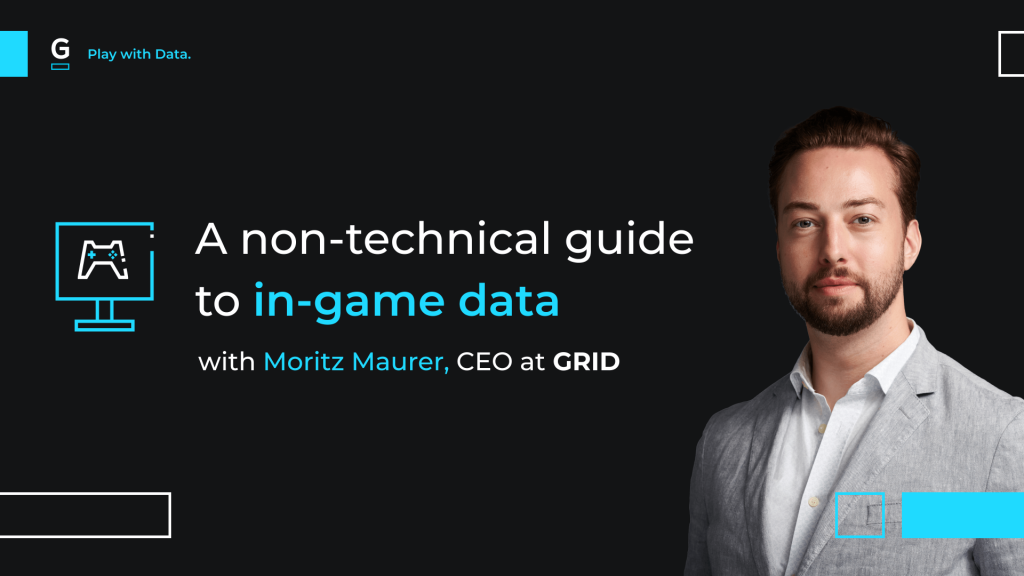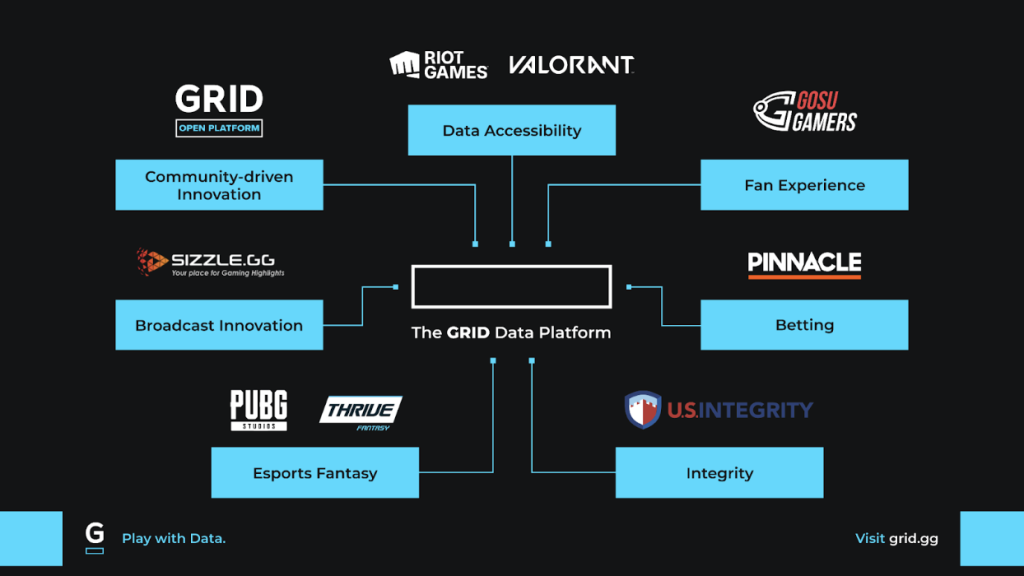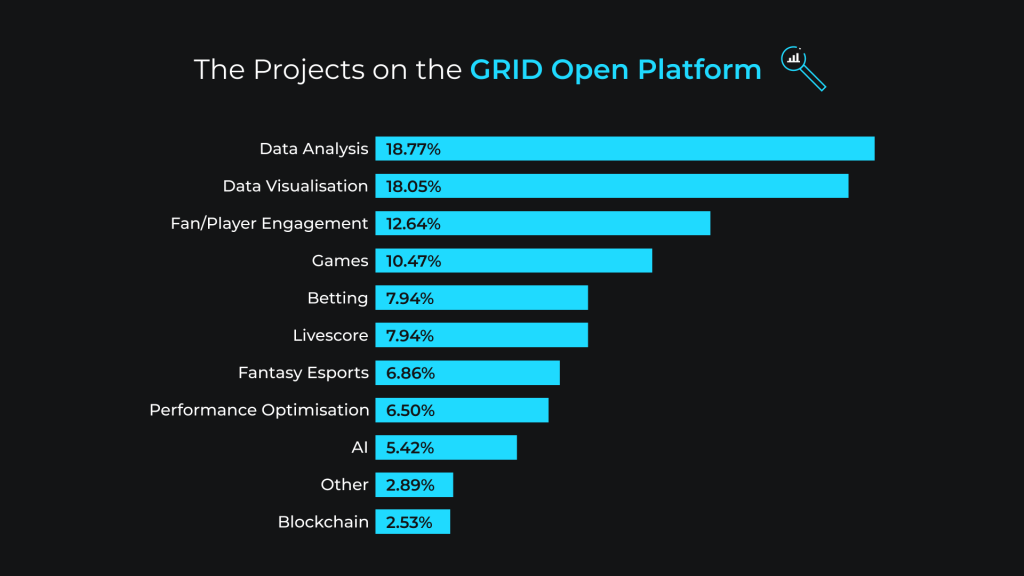
Do you know what in-game data is? What is the difference between official vs unofficial data? And, importantly, why is it such a big deal?
Moritz Maurer, the Founder and CEO of GRID, an in-game data platform, writes for Esports Insider to break down what in-game data is and what role it plays in the competitive gaming ecosystem.
Let’s start with what in-game data actually is
Imagine that you dive straight into the game. Where are you on the map? Have you executed a perfectly timed ultimate in VALORANT? Did you escape a deadly 1v4 clutch in CS:GO? These all are raw in-game events that can be turned into data — player positions, K/D/A, abilities used, economy status. Every split second decision has the potential to alter the outcome of the entire game.
Everything that happens in the game can become an in-game data point. When it comes to terminology — in-game, game data, and play by play data — all these names refer to the same type of data. However it’s crucial to understand that these terms should only be used in the context of data coming directly from the game server — a source of truth.
How to get the highest quality in-game data?
This data can be sourced only directly from the game — a game server or any nearby infrastructure that is linked to the game server. At GRID, we plug our SDK directly into either of these. Raw, in-game events that happen on the server are picked up in real time and transformed into GRID data points.
Access to the game server can only be granted by rights holders since it requires a direct integration. This is why we have secured partnerships with the game publishers such as Riot Games and KRAFTON or tournament organizers including WePlay or PGL — ensuring that data we offer comes only from the official sources. With esports being fully digital by nature, providing an accurate source of truth is incredibly important, this is why GRID’s vision is to exclusively work with official data assets. We take no shortcuts!
The existence of an official data feed implies that there are unofficial alternatives. As you can probably guess, if official data comes directly from the ‘heart of the game’ other methods are, by definition, not as close to the action and therefore of inferior data quality. It is crucial to highlight this inferiority because many companies offer ‘in-game data’, ‘live’ or ‘real-time’ data but in fact their data is collected using third party sources.
Scraping, OCR and manual data collection methods are heavily limited in the granularity and accuracy due to partial viewing points and the data is heavily delayed as a result of stream delays on public broadcasts which serve a source for unofficial data collection. Furthermore, they are acquired without the permission of the rights holder, and often with no consideration for the interests of the competition and esports as a whole.
Why should game data users care about the source?
Let me use a metaphor here — you can either participate in the conversation or listen to it through the wall. In the first case you are invited to receive first-hand information, while in the latter you are essentially eavesdropping. You might assume what’s happening during the conversation will probably mishear a few words, and lose some important contexts and details entirely.
Official data is live, accurate, granular, and complete — you are in the room. Unofficial data comes from various sources, all of them limited in all qualitative attributes.
It goes without saying that, for example, in VALORANT or Dota 2 you are missing quite a lot of essential action if you only look at a portion of a map. It is pretty much impossible to build a sustainable and competitive project if your data source is incomplete or unreliable.
Why is GRID explaining this topic?
GRID is a data platform serving the games industry with complete in-game data infrastructure, data management and asset distribution solutions. We are an official data partner of Riot Games, KRAFTON, PLG and WePlay and we provide access to in-game data to commercial partners in different verticals including media, player coaching or betting.
Next to commercial customers, we serve fans, the community and the professional ecosystem with access to in-game data through solutions such as the GRID Open Platform or the VALORANT Data Portal launched in partnership with Riot Games.
Our customer list includes companies like DAZN, Pinnacle, Evil Geniuses, GosuGamers or bet365 and over 350 other commercial clients. And when it comes to myself, I started over 13 years ago at the intersection of data, esports, and betting. To help unlock the potential of in-game data and directly contribute to the ecosystem growth is a dream come true, a mission I deeply identify with.

What are some actual use cases for official in-game data?
There’s a lot of buzzwords used such as innovation, fan engagement or monetisation. On the other hand, there’s very few actual examples of in-game data ‘in action’. Data that is used to power regulated betting is a big topic in traditional sports in recent years and esports betting being a core growth area in all regulated markets sees a similar trend.
Esports betting is an incredibly demanding use case where the accuracy, speed and granularity of data has a direct commercial impact. If you are successfully catering to regulated wagering, your data solution is really robust, the feed is reliable and accurate. Other use case examples on our GRID Data Platform include:
- The VALORANT Data Portal – Riot is definitely a leading developer in adopting in-game data as a part of its game ecosystem. Just earlier this year we released The VALORANT Data Portal together. It is currently available for professional players who can access data from their scrim and tournament matches to analyse the performance and strategise better. It is a great example of how in-game data can empower the professional scene and create an equal level playing field.
- Esports broadcasts – By integrating GRID in-game data powered widgets, GosuGamers, for example, offers an augmented broadcast experience enhanced by access to minimap, events log, items distribution or players stats, all updated in-real time matching the action on the livestream. So even if Dota 2 looks confusing to you, in-game data can help you navigate what is actually happening in the match through the data visualisation tools that make the gameplay more accessible for new viewers and entertaining for hardcore fans.
- Integrity solutions – US Integrity, which has created a data-driven platform for traditional sports integrity operations, now leverages in-game data provided by GRID to develop next-gen integrity solutions for esports.
- PUBG x ThriveFantasy – Fantasy is a great, native example of a product that heavily relies on in-game data. Last year, GRID collaborated with two of its partners — KRAFTON, developer of PUBG, and esports fantasy platform ThriveFantasy — to deliver an innovative fan experience to North American fans and viewers of the PUBG Global Championship 2022.
GRID Open Platform – Last but not least, community! GRID’s very own project, the GRID Open Platform supports independent developers with free access to in-game data available on the GRID Data Platform, enabling them to kickstart working on their own projects.

We have now over a hundred projects that are supported with access to GRID data to build creative applications. The graphic below breaks down the projects built on our platform into different categories. If you want to apply for access yourself you can do that here.
I hope this article makes the in-game data topic a little bit clearer for everyone, and that we have managed to debunk some myths and misconceptions around it.
At GRID we believe in-game data can unlock new ways to build a sustainable game ecosystem, where everyone from a game developer to an esports fan benefits from aligned incentives and the best quality of data, ultimately to simply play with data.
Supported by GRID.


